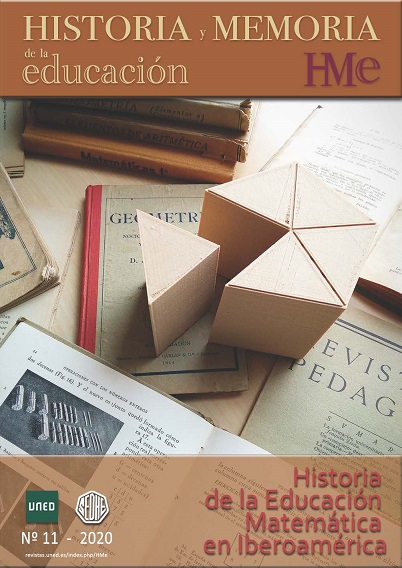Between dream and reality: The rehabilitation of war-disabled Belgian soldiers, 1914 – 1921
DOI:
https://doi.org/10.5944/hme.11.2020.22876Keywords:
Rehabilitation, Disability history, The Great War, Invalid soldiers, Belgium, Vocational training, ProstheticsAbstract
In this article we aim to contribute to the growing interest in disability history, the history of education for people having a disability, and the existing historiography of the Great War. We will focus on the rehabilitation of Belgian blind and physically disabled soldiers. The article will take the ceremony for the Unknown Soldier, which was organized in the early twenties, as a starting point. Although everyone is familiar with the Congress Column of Brussels and the eternal flame burning at the tomb of the unknown soldier, few people know that it was a war blinded man who played an important role in the burial ceremony and that it were eight physically disabled soldiers who carried the unknown soldier to its final resting place. At this ceremony, a successful image of rehabilitation and re-education was implicitly created, showing that disabled soldiers could play a meaningful role in society again. This image will be shattered by a close study of a variety of sources preserved in Flemish and Brussels archives, including the State Archives, the Archives of the Royal Palace, the archives of the Royal Museum of the Armed Forces and Military History, the archives of the Belgian National Institute for Veterans and Victims of War and, the archives of the London St. Dunstan’s Institute. By referring to photographic material and personal files of Belgian disabled soldiers we will demonstrate that rehabilitation was definitely not «a walk in the park» and that for a number of soldiers rehabilitation simply was not possible. More specifically our presentation will zoom in on the ways in which the concept of rehabilitation took form in Belgian rehabilitation institutes such as the one in Boschvoorde for blind soldiers and the school of Port-Villez (France) for all disabled soldiers.
Downloads
References
Alleman. «Port-Villez. Technisch Onderwijs II», De Belgische Verminkte, 15 April 1918, 1.
Anderson, Julie and Neil Pemberton. «Walking alone: Aiding the war- and civilian blind in the inter-war period». European Review of History – Revue européene d’Histoire 14 (2007): 459-479.
[Anonymous]. «Bij onze blinden soldaten», De Belgische Verminkte, 15 May 1918, 3.
[Anonymous]. «L’Oeuvre Nationale des Invalides de la Guerre», L’Invalide Belge, 1 June 1920, 1.
[Anonymous]. L’oeuvre d’aide et apprentissage aux invalides de guerre durant l’Occupation. Brussels, 1918.
[Anonymous]. «Une question sociale d’après-guerre: la Rééducation des Mutilés», L’Événement Illustré 214 (1919): 707-709.
Baynton, Douglas. «Disability and the Justification of Inequality in American History». En The New Disability History: American Perspectives, editado por Paul Longmore and Lauri Umansky, 33-57. New York: New York University Press, 2001.
Belgian Depot for Convalescents. Oeuvre des Invalides de la Guerre, Le Havre: S.d.
Biernoff, Suzannah. «The Rhetoric of Disfigurement in First World War Britain». Social History of Medicine 24 (2011): 666-685.
Bourke, Joanna. Dismembering the Male: Men’s Bodies, Britain, and the Great War. Chicago: University of Chicago Press, 1996.
Cathy Kudlick. «Disability history. Why we need another “other”». The American Historical Review 108 (2003): 763-793.
Claisse, Stéphanie. Du soldat inconnu aux monuments commémoratifs belges de la guerre 14-18. Bruxelles: Académie Royale de Belgique, 2013.
Devlieger, Patrick, Ian Grosvenor, Frank Simon, Geert Vanhove and Bruno Vanobbergen. «Visualising disability in the past». Paedogogica Historica 44 (2008): 747-760.
Galtier-Boissière, Emile. Larousse Médical illustré de guerre. Paris: Larouse, 1917.
Harris, Garrard. The redemption of the disabled. A study of programmes of rehabilitation for the disabled of war and of industry. New York: D. Appleton & Company, 1919.
Liebrecht, Henri. «Une visite à l’Oeuvre de L’Aide et Apprentissage aux Invalides de la Guerre». L’Événement Illustré 178 (1919): 106-110.
Œuvre Nationale des Invalides de la Guerre, 25 ans d’activité 1919-1945. Liège, S.d.
Paeuw, Léon De. La Rééducation Professionnelle des Grands Blessés de Guerre et l’Institut Militaire Belge de Rééducation Professionnelle de Port-Villez-les-Vernon (Eure). Port-Villez, 1916.
Paeuw, Léon De. La Rééducation Professionnelle des Soldats Mutilés et Estropiés. Port-Villez, 1917.
Perry, Heather. Recycling the Disabled: Army, Medicine and Modernity in WW1 Germany. London: Oxford University Press, 2014.
Raemdonck, Liesje and Ingeborg Scheiris. Ongehoord Verleden. Dove frontvorming in België aan het begin van de 20ste eeuw. Ghent: Fevlado-Diversus, 2007.
Rose, Sarah. No right to be idle: The invention of disability, 1840s–1930s. Chapel Hill: UNC Press Books, 2017.
Stassen. «Ontwerp voor inrichting in België van een Nationalen Dienst voor Verminkten en Gebrekkelijken van den Oorlog». De Belgische Verminkte, 10 May 1919, 2.
Stassen and Delvaux. «La rééducation agricole à l’Institut Militaire Belge des Invalides et Orphelins de la Guerre à Port-Villez (Armée Belge)». Revue interalliée pour l’étude des questions intéressant les mutilés de la guerre 4 (1918): 375-386.
Thiébaut, F. La Rééducation Professionnelle des Invalides de la Guerre à l’Institut Militaire Belge de Port-Villez. Port-Villez, 1918.
Van Avermaet. «Jongens! leert goed uw vak». De Belgische Gebrekkelijke, 1 oktober 1917, 3.
Vandendriessche, Joris. «Opthalmia Crossing Borders: Belgian Army Doctors between the Military and Civilian Society, 1830-1860». Belgisch Tijdschrift voor Nieuwste Geschiedenis. Journal of Belgian History 46 (2016): 48-71.
Verstraete, Pieter and Christine Van Everbroeck. Verminkte Stilte [Mutilated Silence]. Namur: Presses Universitaires de Namur, 2014. (In 2018 an English edition was published by ASP-Publishers: Reintegrating bodies and minds – Disabled Belgian soldiers of the Great War).
Verstraete, Pieter. «Disability, Rehabilitation and the Great War: Making Space for Silence in the History of Education». En Educational Research: The Importance and Effects of Institutional Spaces, editado por Paul Smeyers and Marc Depaepe, 95-114. Amsterdam: Springer, 2013: 95.
Verstraete, Pieter. «Remastering independence: The re-education of Belgian blinded soldiers of the Great War, 1914-1940». Educacio i Historia 32 (2018): 257-277.
Vriendt, Samuel De. Croquis, schetsen, sketches. Boitsfort: Institut des Aveugles de Guerre, 1919.
Weygand, Zina. Vivre sans voir: les aveugles dans la societé française, du Moyen Age au siècle de Louis Braille. Paris: Creaphis Editions, 2003.










